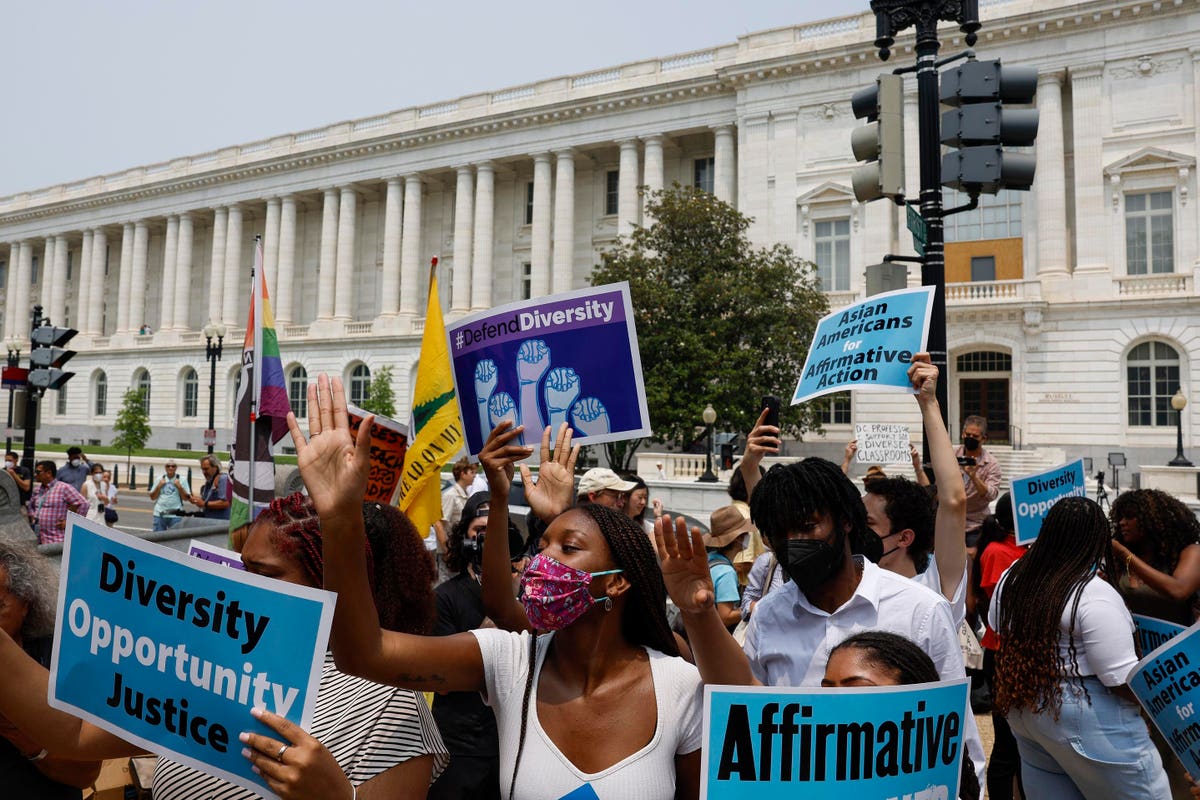The U.S. Supreme Court’s decision to end affirmative action programs at the University of North Carolina (UNC) and Harvard University will likely have a negative impact on the diversity of the student populations on many college campuses unless those campuses take other proactive measures. Looking beyond college campuses, however, there could also be potential negative impacts on workplace diversity.
Employers Say They Are Committed to Diversity
Employers generally say they are committed to increasing the diversity of their workforce. For many, the most logical place to start is entry-level professional positions where they can develop their talent and hopefully keep the diverse employees for years to come in increasingly more senior-level positions.
These employers are making a bet that a college education is becoming more easily accessible and therefore finding diverse talent among college graduates will be easier. That’s why colleges and universities have become increasingly important to the recruitment strategies of mid- to large-sized employers to fill that pipeline. However, the Supreme Court decision has disrupted that bet.
In fact, more than 85% of respondents to the 2022 National Association of Colleges and Employers (NACE) Recruiting Benchmarks Report say that their college hiring program includes a formal diversity recruiting effort, and this number has increased by more than 20% over the past decade.
So, why do employers want to increase the diversity of their workforce?
- They want to better reflect the diversity of general population;
- Their ability to relate to and serve diverse customers is enhanced;
- They believe that diverse perspectives will increase their problem-solving and creativity;
- The commitment will pay off with increased profits; and
- It’s the right thing to do.
Stated Commitments Out of Sync With Reality
Despite the stated commitment from employers, NACE research shows that diversity hiring efforts are still out of sync with graduation rates of diverse populations. Said another way, women and nonwhite graduating students are not hired proportionately to their representation as part of the overall student population. A prime example are Hispanic/LatinX students who made up nearly 16% of 2020 bachelor’s degree graduates but only 10.7% of new hires, according to the NACE 2022 Recruiting Benchmarks report.
Fortunately, employers that truly stand behind their commitments to diversifying their workforce can ensure their goals are met, regardless of the impact that the Supreme Court’s decision is likely to have on many college campuses. This will require those organizations to expand their recruiting efforts and will also require inward reflection to find areas of potential shortcomings.
If employers are serious about hiring a diverse workforce, there are still students waiting for their chance to be hired. While many racially diverse students attend selective colleges and universities like Harvard and UNC, only a small percentage of them attend these schools each year.
Expand Beyond Traditional Target Schools
There are many more diverse graduates from other colleges and universities to also consider. The problem is that some employers focus solely on certain schools they view as prestigious to fill their entry-level professional positions. This is called a target school recruitment. If these schools become less diverse, so will the employee base of the companies that exclusively recruit there.
Of course, there is an argument that the top selective colleges and universities prepare the best and the brightest. There is no doubt some of the greatest minds of our nation attend these schools. However, not all students want to or can attend those schools. The reasons are many and varied. Top diverse talent can be found at hundreds of colleges and universities but will require different strategies for their recruitment into employment opportunities.
Embrace a Different Approach
As detailed in a recent research study that NACE commissioned in partnership with The Center for the Study of Historically Black Colleges and Universities (HBCUs) at Virginia Union University, recruiting from Historically Black Colleges and Universities (HBCUs) and other Minority Serving Institutions (MSIs) requires a different level of commitment and interaction with the colleges as well as the students.
For an employer looking to diversify their workforce, HBCUs represent a good opportunity to find talent. However, to be successful, an employer needs to clearly demonstrate their commitment to equity and inclusion, as well as to the institution itself. This requires proving their commitment and the development of a deep relationship with the colleges beyond simply sending a job posting. This could include regularly attending hiring events on campus, sponsoring student groups, providing classroom projects, hosting company on-site tours, establishing a scholarship program, committing to hiring interns from them, and so forth.
Just like the college admissions dilemma of providing opportunity for historically marginalized and underrepresented populations, there is a similar dilemma for employing those same graduates. Developing a pipeline of diverse talent is complex but possible. The talent is available, and the prospective employees are waiting for their chance. Methodical and thoughtful approaches and solutions are required.
Ultimately, the impact of the court’s recent rulings may not be felt for several years on the employment front; however, any employer that says they embrace diversity within their organization must begin planning now to ensure that any negative impacts will be limited. The talent and solutions are out there, but it is up to employers to embrace and integrate them into their recruiting and hiring practices.
Read the full article here





